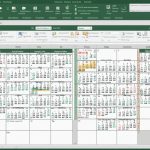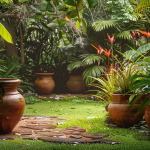In a world where the dress code of the office has significantly evolved, adding a splash of color to your work attire can truly make a difference. It’s not just about brightening up your day or making a fashion statement; it’s about enhancing your self-confidence and influencing how others perceive you. But how can you achieve that put-together look without looking like a walking color wheel? The answer lies in understanding the art of color blocking. This fashion-forward trend involves pairing two or more bold colors in one outfit, giving you an eye-catching, yet sophisticated look. In this article, we’ll explore the best color block techniques that will help you create a dynamic office outfit.
The Science of Color
Before we delve into color blocking techniques, it’s essential to understand the science of color. Color is a powerful tool that can impact your mood, emotions, and even productivity. It’s no wonder that colors play a crucial role in the world of design, whether in fashion, interior decor, or art.
A lire également : How to Select the Perfect Pearl Earrings That Complement a Business Suit?
The Color Wheel is a basic tool for combining colors. It’s comprised of three categories: primary colors (red, blue, and yellow), secondary colors (green, orange, and violet), which are created by mixing the primary ones, and tertiary colors, resulting from combining a primary and a secondary color. Understanding the color wheel helps to create color harmony in your outfits.
Mastering the Art of Color Contrast
One of the best ways to create a dynamic outfit is by mastering the art of color contrast. Contrasting colors, also known as complementary colors, are opposite each other on the color wheel. Some examples are blue and orange, red and green, or yellow and violet.
En parallèle : Which Loafer Styles Are Best for an Office Environment Where Comfort Is Key?
The key to wearing contrasting colors is to balance them in your outfit. For instance, you could wear a blue dress with orange accessories for a high contrast look that is still professional. Alternatively, you could play with different shades of the same color for a more subtle contrast. A soft pink blouse with a burgundy skirt, for instance, creates a beautiful contrast without being too vibrant.
The Role of Neutrals in Color Blocking
Neutral colors such as black, white, grey, and beige play a significant role in color blocking. They can be used to tone down the vibrancy of the bold colors or to create a balance in your outfit.
Consider a black dress with a vibrant green blazer, for instance. The black dress provides a neutral base that allows the green blazer to stand out, creating a bold yet balanced look. On the other hand, you could pair a yellow top with a white skirt to create a light, fresh, and professional look. Neutrals also work well for large pieces of clothing, while the bold colors can be used for smaller pieces or accessories.
Creating a Monochromatic Color Scheme
A monochromatic color scheme involves using different shades, tones, or tints of a single color. This technique creates a cohesive and sophisticated look, making it perfect for a professional setting.
For instance, you could wear a navy blue blouse with light blue trousers and dark blue shoes. Despite using different shades of blue, the outfit will still look coordinated and chic. You could also play with textures and patterns to add more depth and interest to the outfit.
The Power of Accessories in Color Blocking
Accessories are the finishing touches that can either make or break your outfit. When it comes to color blocking, they can be used to introduce a pop of color, create contrast, or add balance to your look.
An easy way to incorporate color blocking through accessories is by selecting a bold color that contrasts with your outfit. For instance, a red handbag can instantly elevate a black and white dress. Alternatively, you can use accessories in neutral colors to tone down a vibrant outfit or to create cohesion in a color-blocked ensemble.
In conclusion, color blocking is a powerful technique that can help you create dynamic and stylish office outfits. By understanding the science of color and mastering techniques such as contrast, use of neutrals, a monochromatic scheme, and the strategic use of accessories, you can confidently wear colors and stand out in the best possible way.
The Influence of Color Psychology on Office Attire
As we delve deeper into the art of color blocking, it’s important to touch on the concept of color psychology. This is the study of how colors can influence our thoughts, emotions, and behaviors. In fashion and interior design, color psychology is often used to create certain moods or evoke specific responses.
Take the color red, for example. Often associated with passion, excitement, and energy, red can be a great color to wear if you want to command attention and convey confidence. Conversely, blue tends to be associated with calmness and stability, making it a good choice for stressful days.
Consider the message you want to convey when choosing your color combination. Going for a job interview? You might want to incorporate some blue into your outfit to convey trustworthiness. Giving a presentation? A splash of red could convey your passion and enthusiasm.
It’s also important to consider the season. Certain colors work well year round, while others might be more appropriate for specific times of the year. Pastels, for instance, are often associated with spring, while deep, rich tones might be more appropriate for the colder months.
The Art of Low and High Contrast Color Blocking
Contrast is a critical element of color blocking. High contrast looks, created by pairing complementary colors, are bold and eye-catching. On the other hand, low contrast looks, created by pairing colors that are closer together on the color wheel, are more subtle and sophisticated.
High contrast color blocking is all about making a statement. For instance, pairing a bright red blouse with a deep blue maxi dress would create a striking look. This approach is ideal for those who want to stand out and make a statement with their fashion choices.
Low contrast color blocking, on the other hand, is more subdued and can often be easier to pull off in a professional setting. For instance, pairing a soft pink blouse with a deep burgundy skirt creates a chic, sophisticated look that’s still interesting and visually appealing.
Remember, the key to successful contrast is balance. Too much contrast can be overwhelming, while too little can be boring. Aim for a happy medium that suits your personal style and the occasion.
Wrapping it Up: The Art of Color Blocking for Dynamic Office Outfits
In conclusion, color blocking is an innovative and trendy way of upgrading your office attire. By understanding the color wheel, mastering high and low contrast, using neutrals to balance your outfit, and implementing the principles of color psychology, you can create eye-catching, dynamic outfits that enhance your brand identity at work.
Remember that the concept of color blocking isn’t limited to your clothes. Accessories, shoes, and even your office stationery can participate in the color scheme you want to create. Above all, remember that fashion should be a form of self-expression. Don’t be afraid to experiment with different color combinations until you find what works best for you.
Whether you opt for a high contrast, low contrast, or monochromatic color block, remember to keep it balanced and appropriate for the setting. With these techniques in your fashion arsenal, you’re sure to turn heads in the office for all the right reasons!











